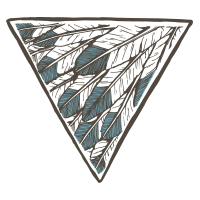
Roving French Reporter/Road Trip: Oradour-sur-Glane
On a road trip from the beaches of Normandy, I headed south, direction Limoges. It wasn’t a straight line south – I had to head east from the Baie of Mont St Michel and hit the primary autoroutes that would eventually take me into the Ariège, my final destination. My halfway stop was near Limoges, where I’d pre-determined to call it a day and rest in a chambres d’hôtes. Reading the reviews online, I booked one, and got there just at twilight. Good thing too. It was down a lone country road, potholed, dusty and dry, that clearly ran as boundary between farmland and a few stray houses.
It took me three turnaround tries to locate it. Really, I’ve discovered the hard way, one has to adopt a ‘French nose’ to find anything, given French directions and signs. So I did.
It was superb. Out in the country, fresh night air, silent, well-appointed — I gave it over-the-top stars on the Review Page.
The host, Jean Marie, is characteristically old-world French and charming. His residence which is also his guesthouse, has three independent rooms that circle around a comfortable, relaxed and modern living room. But … this story is not about guesthouses, though he does play a part.
Without intention, while researching where to stay, I realized I was heading to an area probably near Oradour-sur-Glane. I wasn’t sure, so I looked it up. Indeed; Jean Marie’s village, Bonnac-la-Côte, was 20 minutes from Oradour.
What a coincidence. Discovering this had me shift my itinerary slightly, so that next morning, before driving further south into the Ariège, I could walk the streets of Oradour.
When I went to tally up with Jean Marie, he asked me where I was going. I told him I was heading south, but first I was going to spend the morning at Oradour-sur-Glane. His body language was immediate and definitive; ‘Why would you want to go THERE … it is so very sad,’ to which I responded, ‘It feels important.’ He shrugged.
Off I went; merci beaucoup, Jean Marie; full from a classic petit déjeuner — croissants, pain au chocolat, butter, jams, cheeses, coffee, tea — and orange juice.
Wandering through tiny villages, though seemingly asleep, I stopped in front of the driveway of one man’s home stunned with how practically beautiful it was. He was busy pitching hay. And when I stopped to watch, he stopped. So I rolled down the window, said ‘Bonjour – sorry, but your home is so beautiful.’ He smiled broadly, and we waved adieu.
Around a few more curves I saw an old but gloriously abundant garden growing … this was the end of August and the pumpkins were on the vine. But the vines weren’t on the ground. The gardener had straddled them on a thin, old wire fence. From afar, it looked like huge bright orange lanterns swinging in midair.
All of this, between departing the chambres d’hôtes and entering Oradour.
Over time and travels, I’ve discovered when visiting iconic places, whether the Normandy beaches, Oradour, Holocaust museums, the camps and memorials scattered across the landscapes of Europe — each and every one, are les phares – lighthouses – where the world stands still and reconciles the discrepancy between humanity’s propensity for evil, in the face of good.
The Standing Stones of Oradour do not ever stop radiating their living message. And though I cannot say ‘come to France to visit Oradour’ — it is smack in the middle of the country, and easily missed, actually — I can say when you come to France, if you are anywhere within the vicinity, bring yourselves, your children, your friends, your enemies, to this village where revenge held sway to its very last breath.
It’s trite to say ‘it is a reminder’. It’s vital to say, walking the streets fills you with emptiness.
The incident occurred on 10 June 1944, and After the war, President Charles de Gaulle walked the streets and said ‘leave it just as it is.’
This is what greets you. It’s a humble walk where everything goes into slow motion. To stop in front of a shop, to absorb the story without words or pictures — to let yourself listen to that frozen moment – takes time.
Then there’s the next family’s home. The next hairdresser’s business. The next boucherie’s incinerated storefront … People say nothing. Cross their arms across their chests. Tears roll silently down cheeks. The silence is thunderous.
I arrived early — it was just after 9, and walked Oradour for two hours.
It doesn’t take two hours. It could take 20 minutes.
But there is nothing like personal experience. I knew about Oradour from a British friend who asked me if I’d heard of it. I hadn’t. We were having a meal together, he told the story. I shelved it, but did not forget. It was his relay, his ‘signposting’ le phare, that took me there.
I consider the most telling, returning impact Oradour has had for me personally, is that it doesn’t ever go away.
There is no extinguishing radiance born of tragedy.








